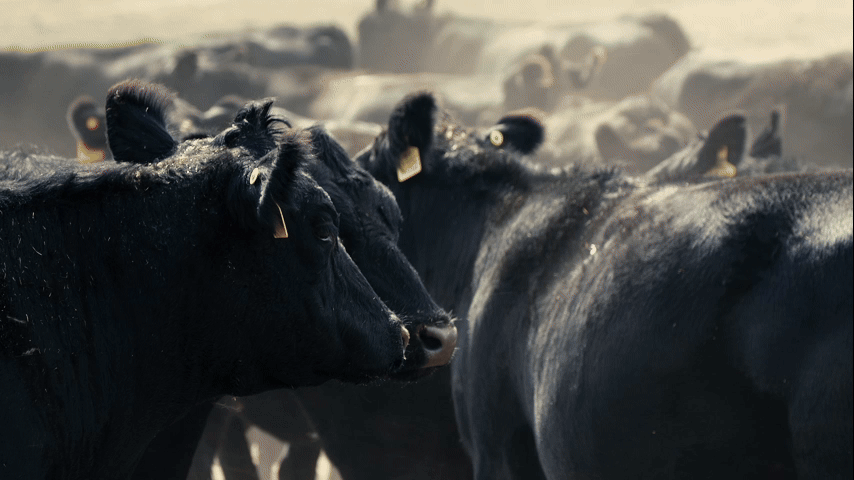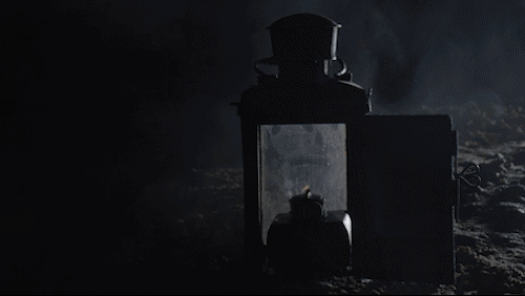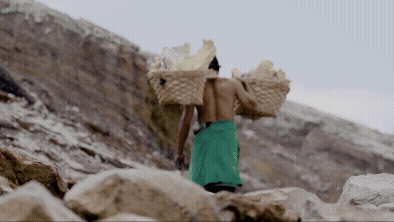Film
Synopsis: Filmed over three decades, Danube Delta: The Amazon of Europe is a feature-length documentary that captures the profound ecological evolution of one of Europe’s last great wildernesses. The Danube Delta, renowned for its pristine wetlands and virgin forests, stands as a critical refuge for biodiversity. This film traces the region’s journey from the environmental disruption of forced industrialization during the communist era, through the contemporary threats of overtourism and rapid habitat degradation. At the same time, it highlights emerging efforts to restore ecological balance—such as the successful reintroduction of native species like jackals and beavers. Combining long-term observation with scientific insight, the documentary offers a compelling portrait of both environmental decline and the promise of rewilding in a rapidly changing Europe.
moreThe Cape Town Water Crisis
"Day Zero"—a phrase that typically signifies the final moment in a countdown—has long belonged to the realm of science fiction, often associated with dystopian futures and apocalyptic collapse. But in early 2018, this abstract concept became an imminent reality for Cape Town, South Africa—a modern metropolis of over four million people.
For the first time in modern history, a major city faced the possibility of its municipal water supply running dry. If Day Zero arrived, taps across the city would be turned off. Residents would have to queue at designated collection points under armed guard to receive their daily water rations. Schools, hospitals, businesses—life itself—would be profoundly disrupted.
What was once unimaginable had become terrifyingly real: a city on the verge of complete water depletion. Cape Town’s Day Zero was no longer a warning of things to come. It was a moment poised to redefine how the world thinks about water, resilience, and survival in the age of climate change.
With Alan Winde Western Cape Provincial Minister of Economic Opportunities Ian Douglas Neilson Deputy Mayor of Cape Town Sheikh Abduragmaan Alexander Religious Minister at Masjidul-Quds Chantelle Albury scenario strategist and bestselling author
moreThe Belgian Antarctic Expedition of 1897–1899 was the first expedition to winter in the Antarctic region. Led by Adrien de Gerlache de Gomery aboard the RV Belgica, it was the first Belgian Antarctic expedition and is considered the first expedition of the Heroic Age of Antarctic Exploration. Among its members were Frederick Cook and Roald Amundsen, explorers who would later attempt the respective conquests of the North Pole.
The Belgica expedition, led by Adrien de Gerlache, was the first to overwinter in Antarctica (1897-1899). It was a groundbreaking scientific voyage that charted new lands and oceans, while also facing extreme conditions and chal-lenges. The expedition is considered the first of the Heroic Age of Antarctic Exploration.
First wintering in Antarctica:
moreFor more than 50 years, sulfur mining has shaped daily life at the Ijen volcano complex—a chain of composite volcanoes straddling the border of Banyuwangi and Bondowoso Regencies in East Java, Indonesia. This harsh, alien landscape is famed for its surreal blue fire and a highly acidic crater lake, but it's also home to one of the most grueling forms of manual labor on Earth.
Each day, around 300 miners climb over two miles up the steep slopes of Gunung Ijen. From there, they descend more than 900 yards into the toxic crater to extract chunks of bright yellow sulfur, known locally as "Devil’s Gold." The name reflects both the substance's vivid color and the danger involved in collecting it. Despite the suffocating sulfur dioxide fumes, extreme heat, and lack of protective gear, the miners carry baskets weighing up to 90 kilograms (200 pounds) back up the crater and down the mountain, making multiple trips per day.
The work is physically punishing and hazardous to health. Prolonged exposure to sulfur gas leaves many with respiratory issues, burned skin, and scarred bodies. These miners—some of whom have worked here for decades—bear the visible marks of their labor: poisoned lungs, chemical burns, and backs permanently hunched from the weight they carry. Yet for many, the income is essential in a region where alternative employment is scarce.
moreRafflesia arnoldii, the corpse flower, or giant padma, Its local name is Petimum Sikinlili. It is a species of flowering plant in the parasitic genus Rafflesia within the family Rafflesiaceae. It is noted for producing the largest individual flower on Earth. It has a strong and unpleasant odor of decaying flesh.
moreThe Untouchables: Caste in Modern India is a powerful and unflinching documentary that explores the enduring legacy of caste-based discrimination in contemporary India. Through intimate stories, on-the-ground reporting, and historical insight, the film reveals how the ancient system of "untouchability" continues to shape lives despite constitutional abolition and social progress.
The documentary follows the experiences of Dalit individuals across rural villages and bustling cities, highlighting both the overt violence and the subtle, everyday exclusions they face. It delves into the personal journey of a Dalit student fighting for her place in a prestigious university, a manual scavenger struggling to escape generational labor, and a grassroots activist leading a movement for dignity and equality.
Interwoven with expert commentary from historians, sociologists, and legal scholars, the film also examines the legacy of Dr. B.R. Ambedkar, the father of India’s Constitution and a Dalit icon, whose vision for a casteless society remains unfinished.
Visually compelling and emotionally resonant, The Untouchables challenges viewers to confront uncomfortable truths about social hierarchy, resilience, and the meaning of justice in the world’s largest democracy.
moreThe Tribes of the Omo Valley
I was drawn to the Omo Valley in southwestern Ethiopia’s Great Rift Valley by its extraordinary tribes and rapidly disappearing cultures. This region—one of the last vast tribal territories on Earth—remains so isolated that National Geographic has dubbed it “Africa’s Last Frontier.” Widely regarded as the cradle of humanity, the Omo Valley is still governed by ancient customs, rituals, and cycles of revenge. The documenatry captures the story of the Omo River Valley—an awe-inspiring part of Africa where our earliest ancestors once roamed. The land is wild and singular, as are the people who inhabit it. The valley is home to a diversity of tribes, each with distinct customs, colors, and ways of life, yet all share a deep reliance on the river. Their ceremonies, humble dwellings, and livestock practices reflect a profound harmony with nature. That fragile balance has been severely disrupted by the construction of the Gibe III Dam—an emblem of development that benefits Ethiopian elites and international investors at the expense of local communities. The dam generates electricity for export to Kenya, while the river’s water is siphoned off to irrigate vast sugar and cotton plantations. Once forested lands are now cleared and converted into sprawling monocultures, owned and operated by foreign entities—threatening both the environment and the survival of these ancient ways of life.
moreSynopsis:
Bitter Brew pulls back the curtain on the luxury coffee industry, focusing on one of its most unusual — and controversial — products: Kopi Luwak, also known as civet coffee. Marketed as rare and exotic, this coffee is made from beans that pass through the digestive system of a small animal called the Asian palm civet.
But behind the novelty and high price tag lies a much darker story.
Shot across Indonesia and beyond, this documentary follows journalists, conservationists, and farmers who are challenging what the world thinks it knows about Kopi Luwak. It turns out, much of the so-called “wild” civet coffee is anything but. Civets are often captured from the wild, kept in cramped cages, and force-fed coffee cherries under terrible conditions — all to meet global demand.
Alongside the animal welfare concerns, Bitter Brew explores how fraud, greenwashing, and lax regulation fuel a booming market where very little is what it claims to be. Former workers, ethical coffee producers, and activists speak out, offering insight into a system that thrives on consumer ignorance.
This film isn’t just about coffee — it’s about the hidden costs of luxury and the choices we make without realizing who (or what) pays the price.
moreBears - From conflict to coexistence In Romania's mountains live the last large populations of bears (Ursus arctos), lynx (Linx, linx carpathicus), and wolves (Canis lupus), which have disappeared from many other regions of Europe. These species living in the Carpathians have been recently "declared" harmful and a "regulation" was decided by the Romanian authorities, which will lead to dramatic consequences. Big game deprived of their habitat coming into contact with humans raises highly complex ecological, social, economic, ethical and political problems. Special guest Dr. Jane Goodall, DBE Founder, Jane Goodall Institute UN Messenger of Peace
moreIn a rural Romanian town, former itinerant traders—many of whom gained their wealth working abroad in often dubious fields, including child prostitution and organized beggary—have traded their caravans for opulent mansions.
moreOn June 24, 1986, with General Secretary Nicolae Ceausecu presiding at the plenary session of the Romanian Communist Party, a decision was made that across Romania, 3931 villages should disappear from the country's map. Not even the 1989 Romanian Revolution could save Bozodujfalu from destruction. The last houses and churches of the village disappeared underneath the water flowing from the damn in 1994.
moreINSIDE EUROPE'S LAST LEPROSY COLONY The village of Tichilesti is in a remote area of Romania on the edge of the Danube Delta, and it is home to what is thought to be Europe's last remaining leprosy colony. Today, Tichilesti is still home to 7 residents who have had leprosy and are now cured, one of whom has lived there 71 years. The documentary is the only audiovisual document that preserves the history of leprosy in Romania and the memories of the last leprosy patients from the Tichilesti colony.
more


